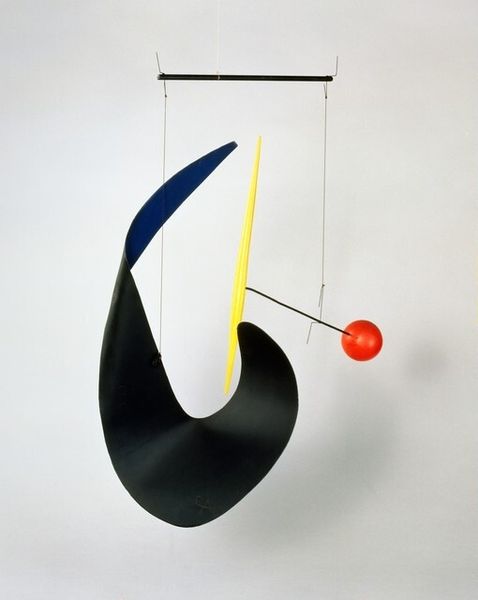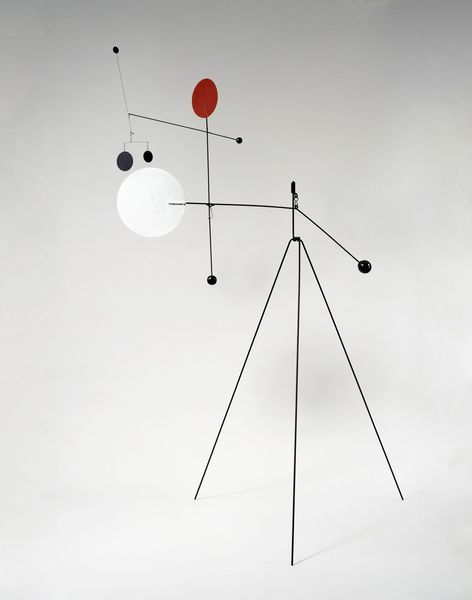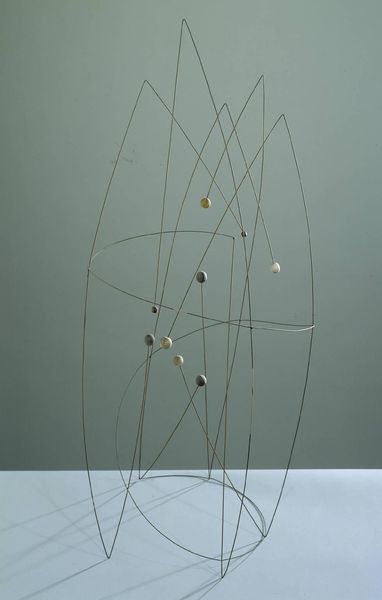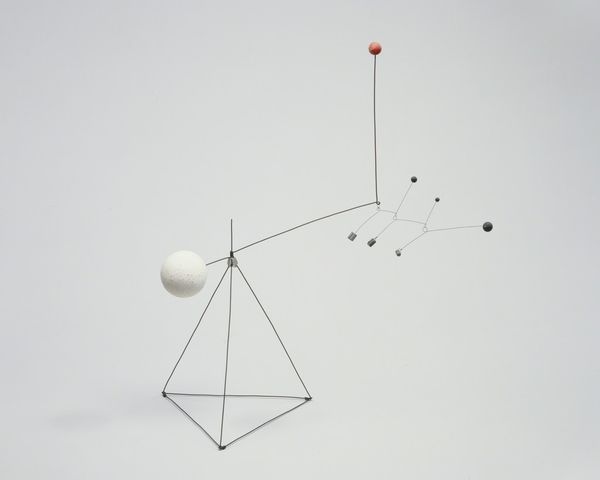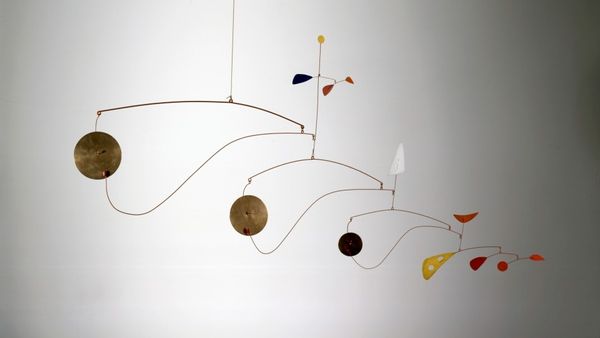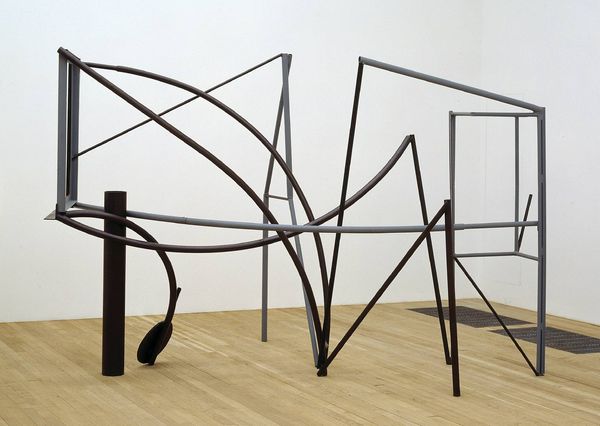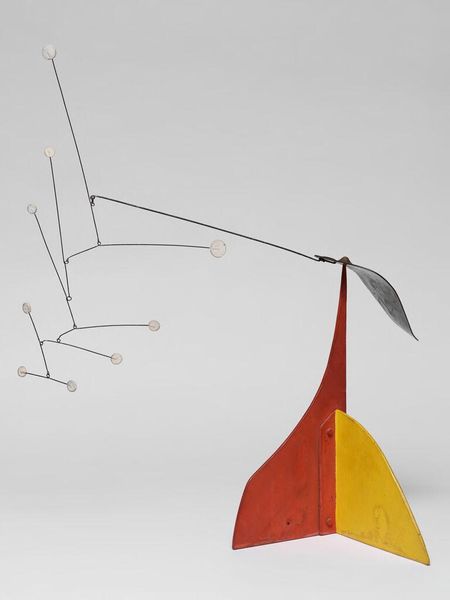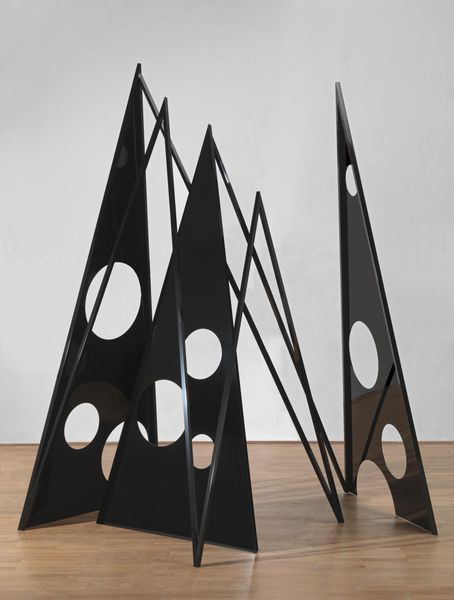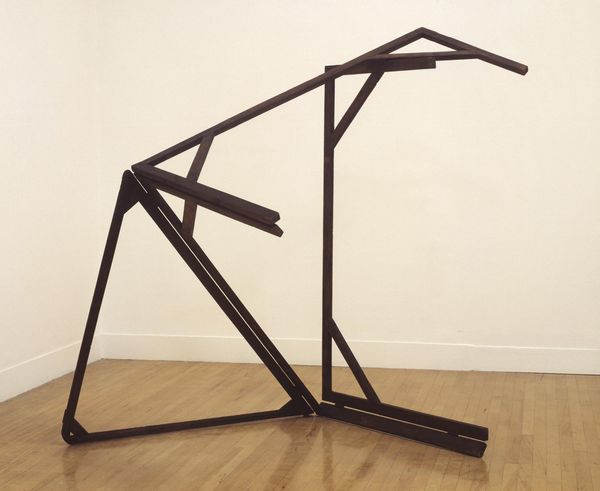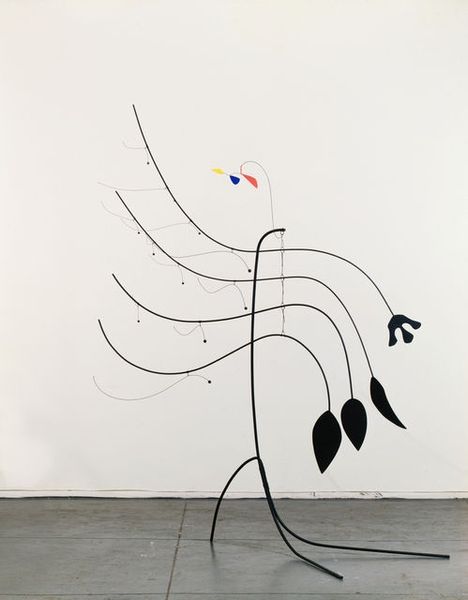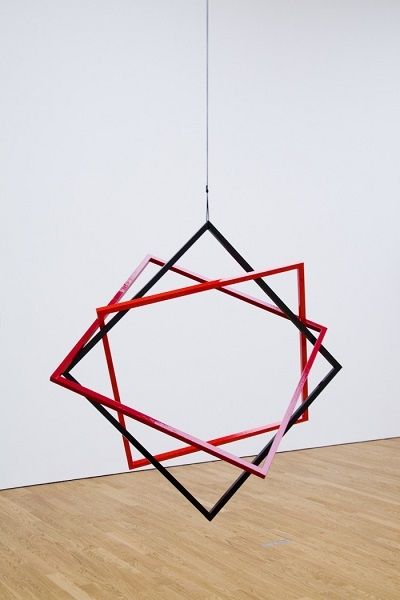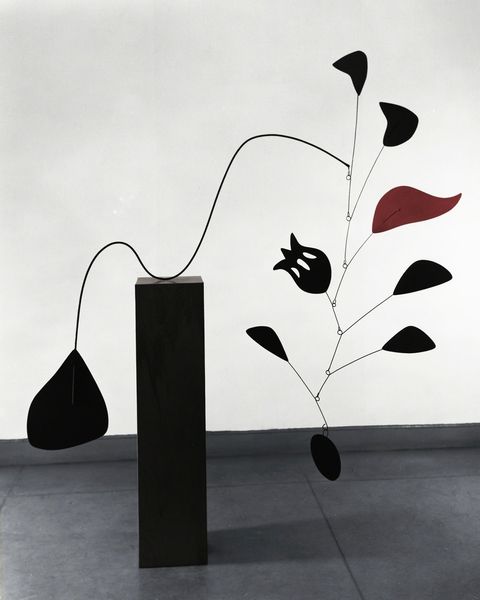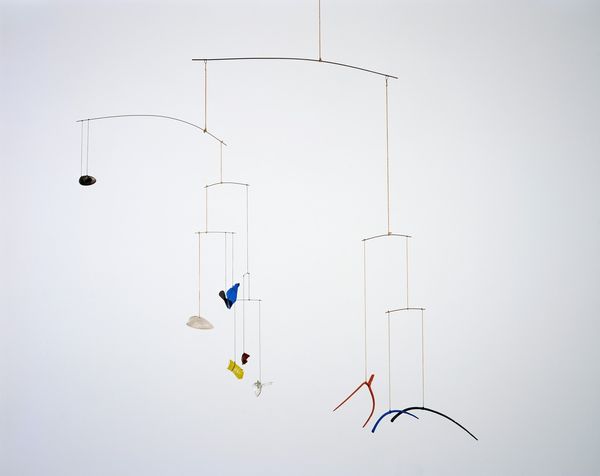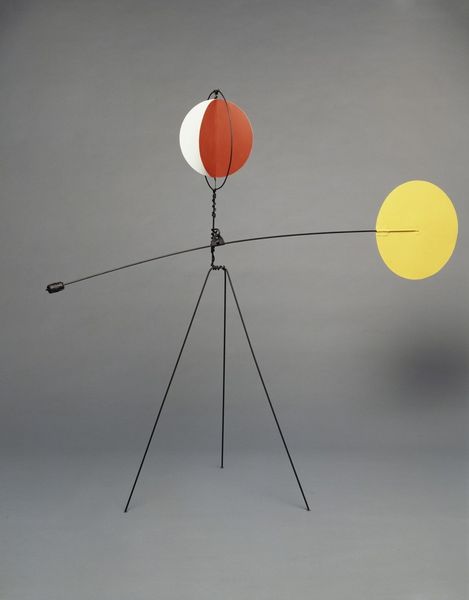
Dimensions: object: 2280 x 2030 x 2600 mm
Copyright: © ARS, NY and DACS, London 2014 | CC-BY-NC-ND 4.0 DEED, Photo: Tate
Curator: Alexander Calder's "Untitled" mobile, housed at the Tate, presents a striking balance using metal. Immediately, I sense a playful yet precarious tension—almost as if it’s holding its breath. Editor: The bright primary colors--red, yellow and green--suspended on delicate lines seem to mimic celestial bodies in orbit. It’s a deceptively simple construction. Curator: Indeed, Calder was fascinated by the cosmos, which surfaces in the shapes and the engineered suspension. These forms resonate with the visual language of mid-century modernism, reflecting a post-war optimism. Editor: And the industrial materials are essential. They root the work in a particular time, speaking to both technological advancements and an enduring search for harmony in a chaotic world. Curator: The asymmetry of the forms makes it visually interesting but also symbolically unsettling. It's not perfection that we find here, but an acceptance of impermanence. Editor: Ultimately, "Untitled" invites us to find beauty in the equilibrium, however fleeting, that Calder so cleverly engineered.
Comments
Join the conversation
Join millions of artists and users on Artera today and experience the ultimate creative platform.
tate 7 months ago
⋮
From its invention in 1932, the American artist Alexander Calder became associated with what Marcel Duchamp dubbed ‘the mobile’. Calder’s suspended sculptures seemed to refer to the mysterious harmony of nature. He often exhibited them in Paris, where he lived, and London during the1930s. Calder’s British friends included the artist John Piper and Myfanwy Evans, the editor and publisher of the avant-garde magazine Axis in which Calder’s work was frequently reproduced. This work was assembled and painted in Piper’s garden; it was first exhibited in 1937 at the Mayor Gallery. Gallery label, September 2004
